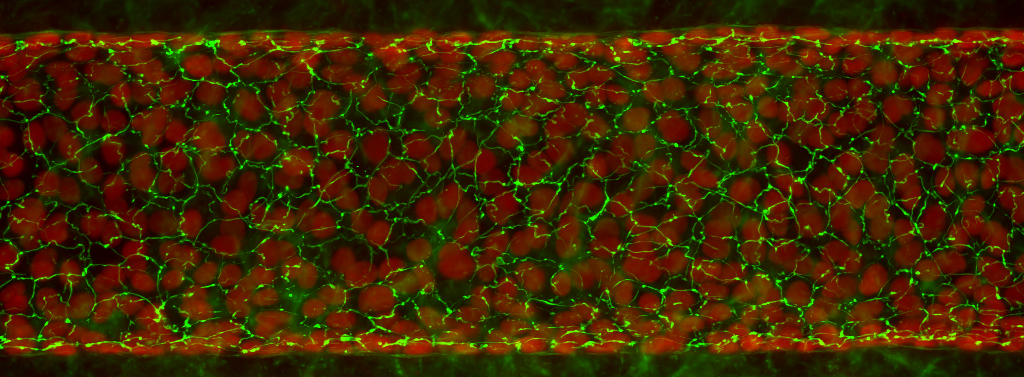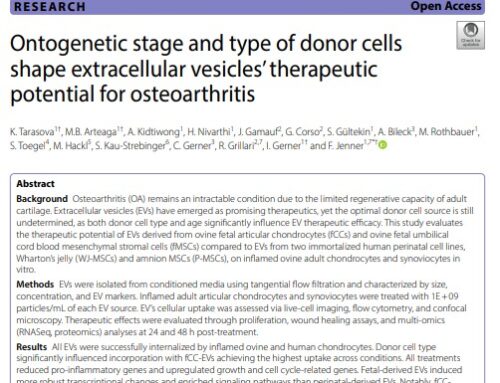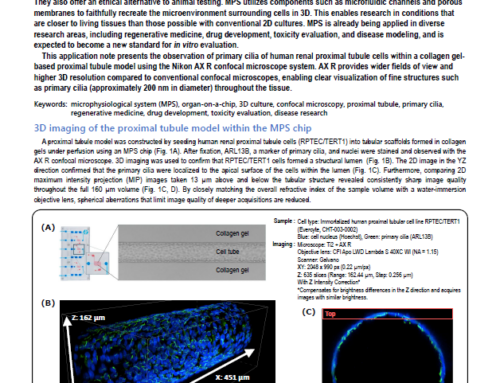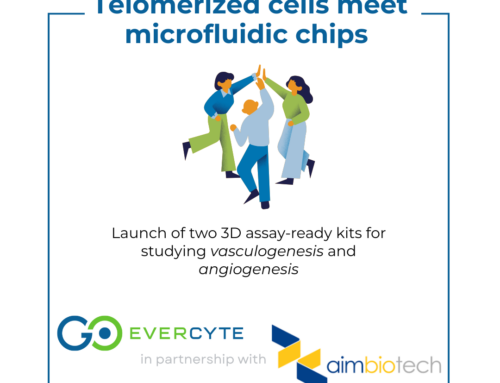Collaboration with Nortis to establish human kidney-on-a-chip model
August 4th, 2023. Vienna, Austria
Our telomerized Human Renal Proximal Tubular Epithelial cells (RPTEC/TERT1) were used in collaboration with organ-on-a-chip (OOAC) leader Nortis, to establish a human relevant kidney-on-a-chip model.
RPTEC/TERT1 cells can be passaged numerous times while maintaining the expression of cell-type specific markers and desired morphology which are logistically and scientifically important aspects to a robust OOAC model. These characteristics make Evercyte telomerized cell lines highly applicable to organ-on-a-chip systems.
Moreover, the RPTEC/TERT1 pre-seeded microfluidic chips can be used to study cellular uptake and transport, drug-induced nephrotoxicity, test various biomarker responses and much more, offering a powerful tool to pre-clinical researchers.
Read the full press release here.
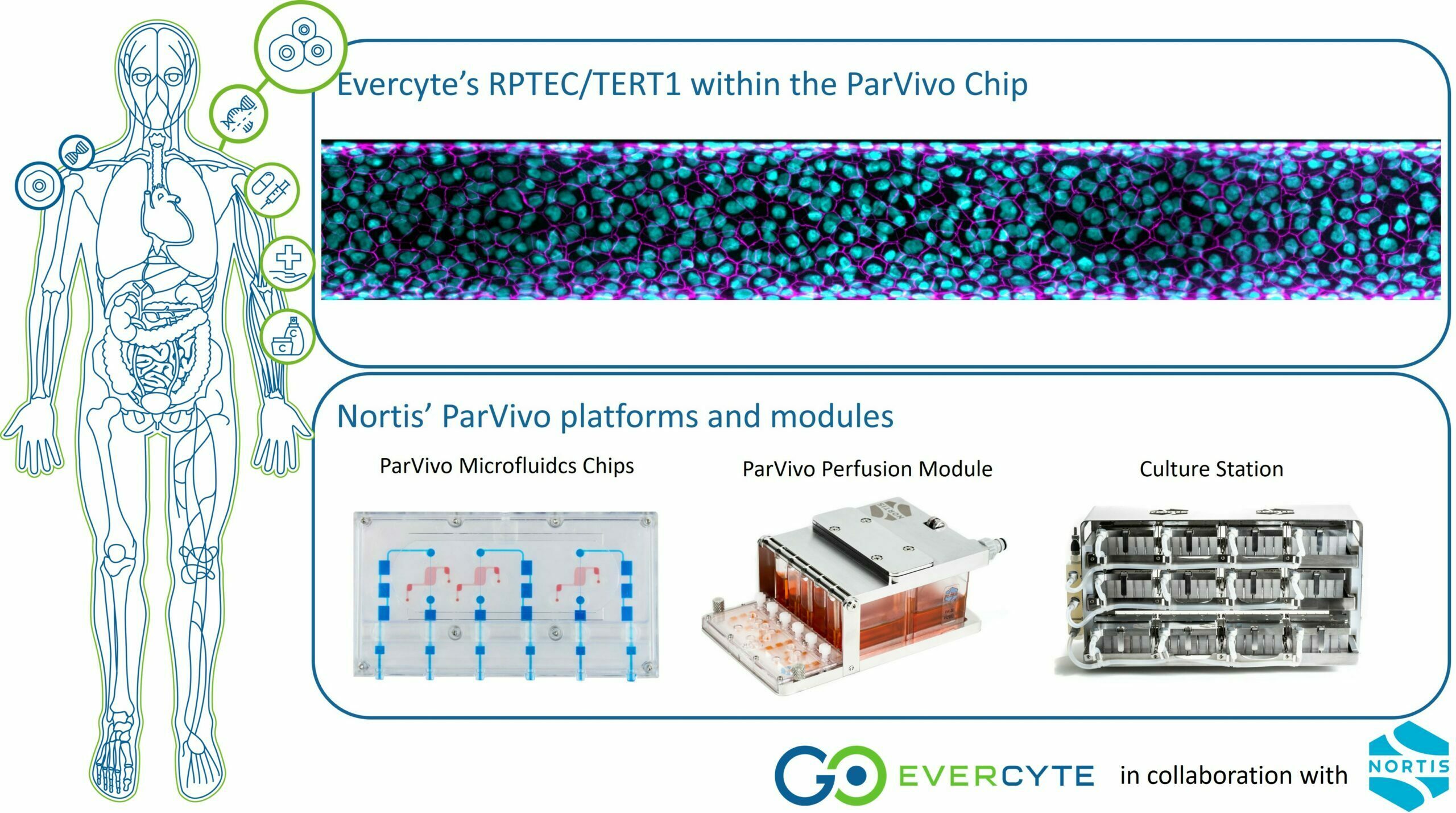
Figure 1. Confocal image of a 3D-engineered tubule segment grown from Evercyte’s human kidney proximal tubule cells (RPTEC/TERT1) in a ParVivo™ Chip. Tight junctions expressing ZO-1 shown in magenta and nuclei shown in blue (upper panel). Nortis’ ParVivo Organ-on-Chip platform comprises patented microfluidic chips and corresponding perfusion system providing researchers with physiologically relevant 3D tissue models to simulate the in vivo environment. Culture station provides locations to house multiple perfusion modules (lower panel).
Figure 2. A 3D-engineered proximal tubule tissue segment in a Nortis organ-on-chip device surrounded by a collagen extracellular matrix. Cellular tight junctions are stained with antibodies against the junctional protein ZO-1 (green), and nuclei are stained with Hoechst 33342 (red). Image acquired using a Nikon Ti2 inverted/A1R confocal microscope.
Image courtesy of Nortis Bio Inc.

